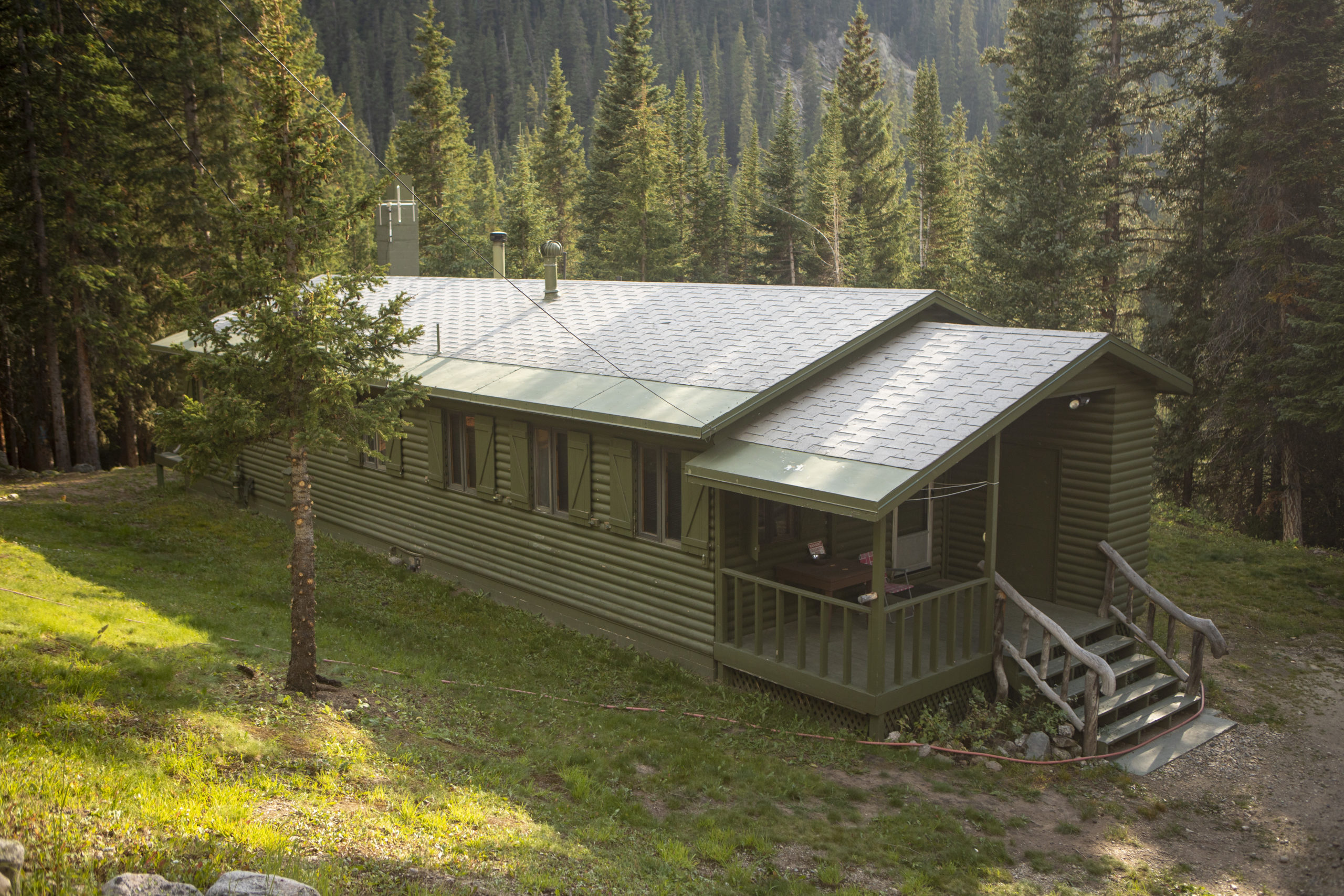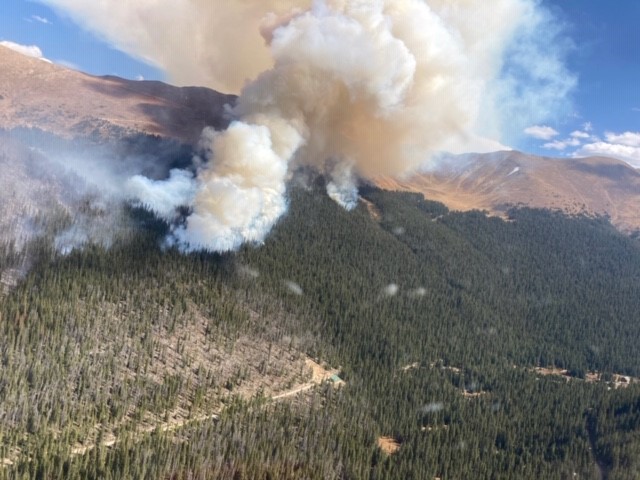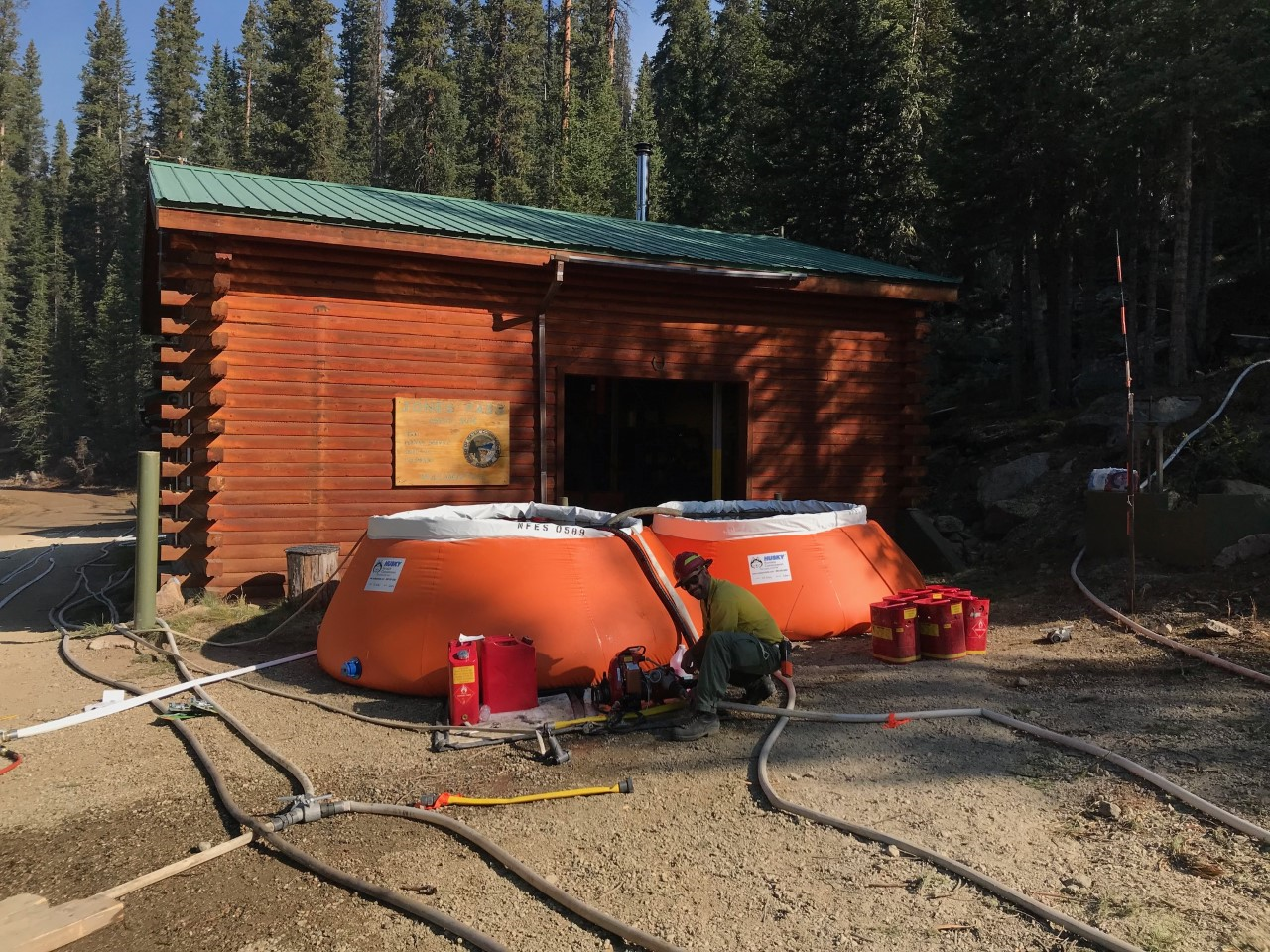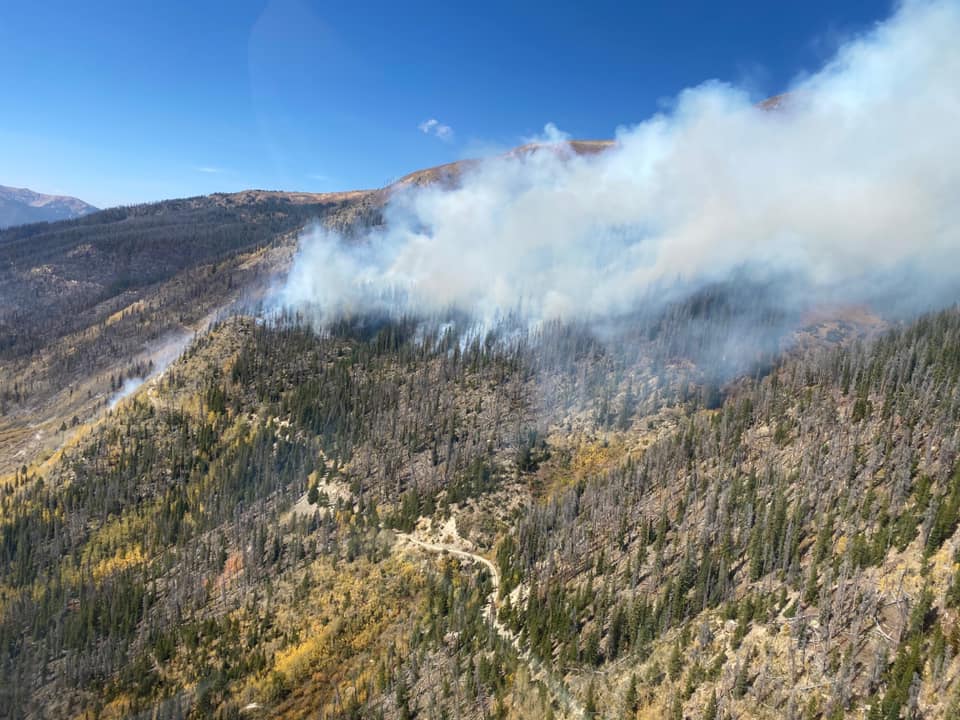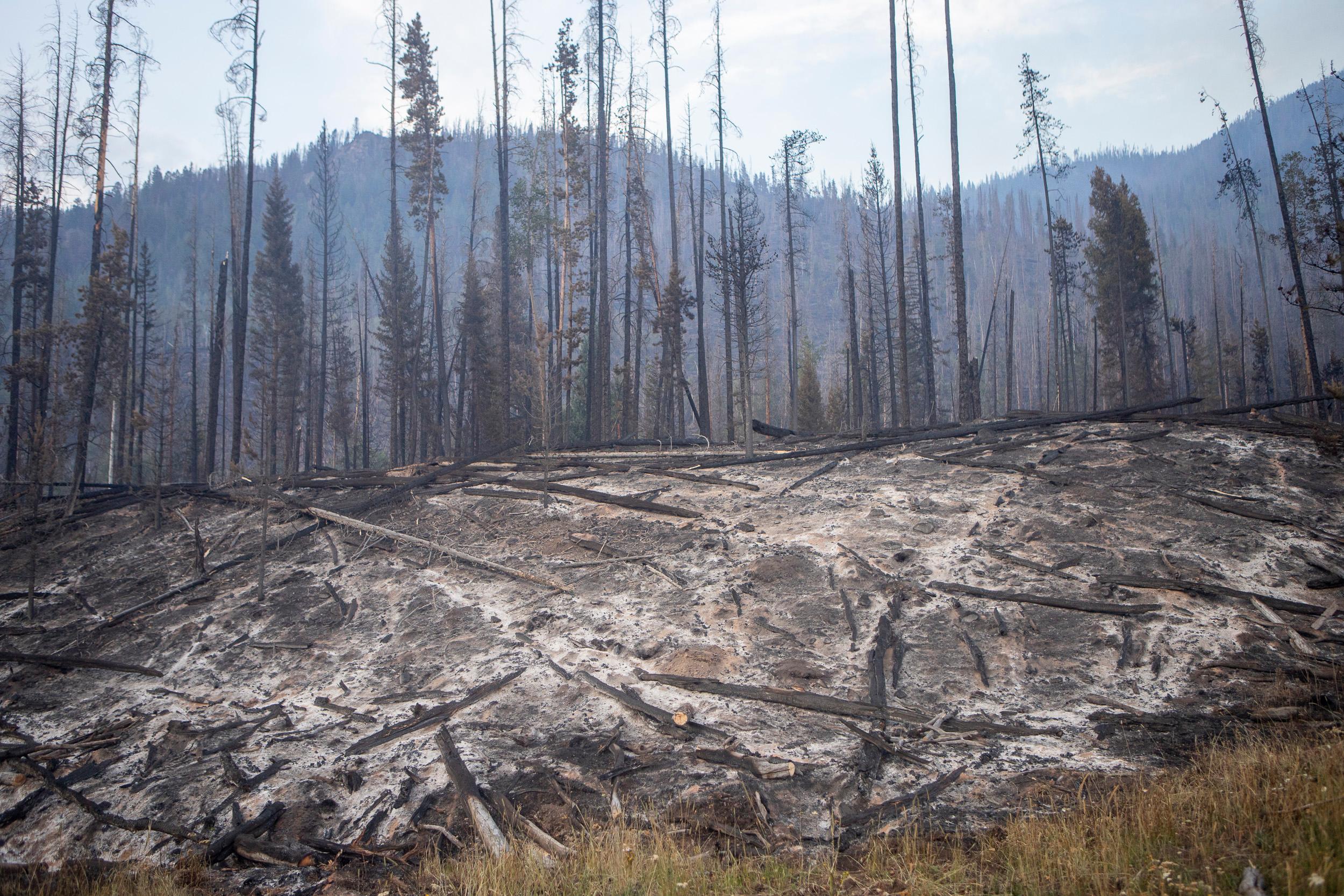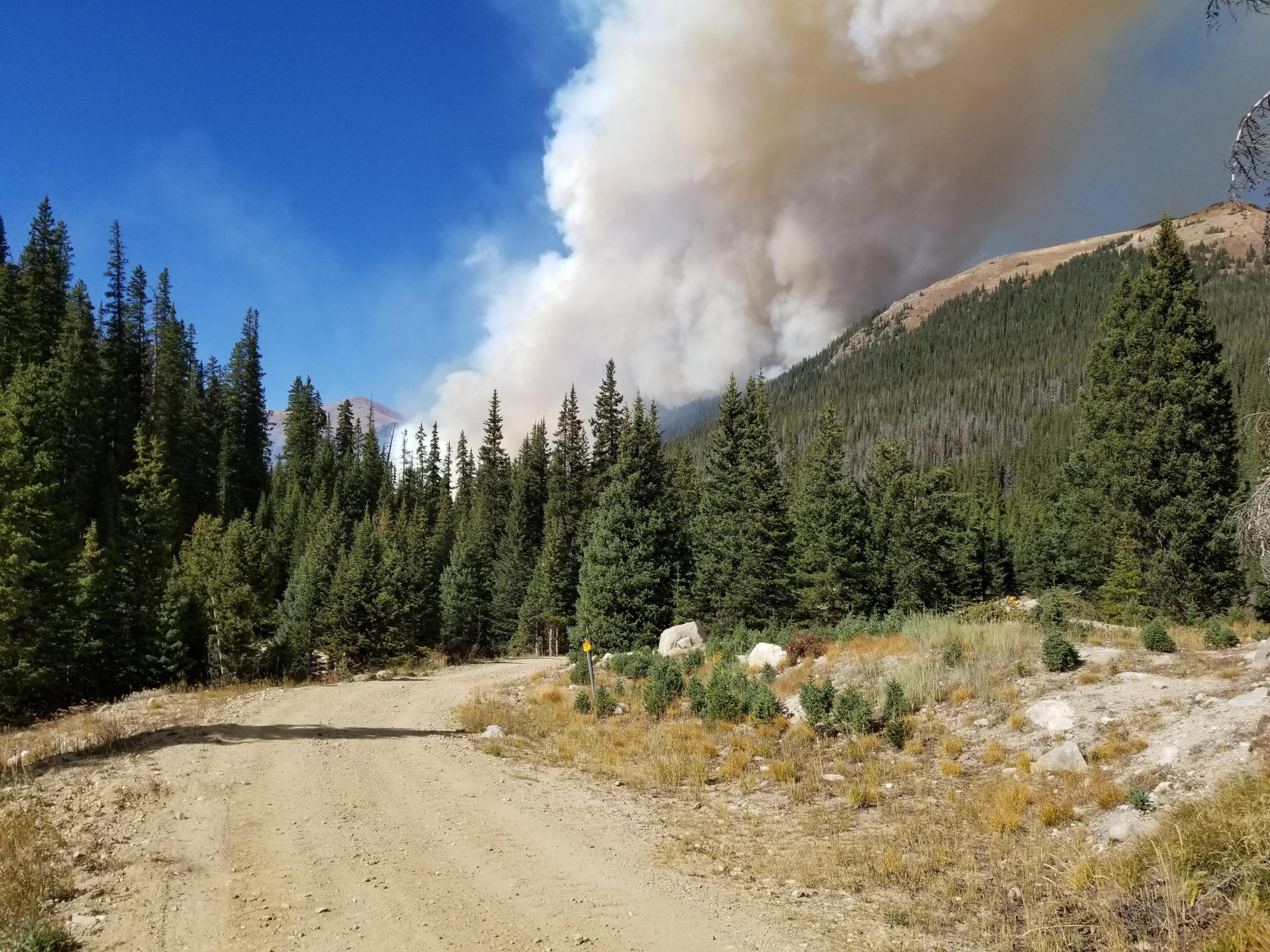
Grand County wildfire burns in Denver Water’s collection area
Denver Water continues to closely monitor the Williams Fork Fire in Grand County. The wildfire started Aug. 14 and as of Oct. 12 it has burned more than 14,000 acres about 7 miles southwest of Fraser.
Employees and facilities
Denver Water’s primary concern has been the safety of its employees who work at its Grand County facilities at Williams Fork Reservoir, Winter Park and at the remote Jones Pass headquarters.
The fire is far enough away from the reservoir and the Winter Park office that workers, buildings and infrastructure at those locations are not at risk.
However, Denver Water has water infrastructure, a cabin and several utility buildings in the Jones Pass area that were less than 1 mile away from the fire as of Oct. 6. The remote location is only accessible through the utility’s Gumlick Tunnel under the Continental Divide or via a rugged backcountry road that goes over the Divide.
Denver Water employees have moved vehicles, equipment and fuel from the Jones Pass site twice during the past two months as fire conditions changed. Crews have not been staying overnight at the bunkhouse as normal due to the fire danger, but go to the site daily through the tunnel to maintain water delivery operations.
The utility’s team has been working closely with the fire’s incident management team and the U.S. Forest Service to provide logistical support, transportation and help with wildfire mitigation.
The firefighters have focused on structure protection and building fire containment lines. As the wildfire moves toward the road over Jones Pass, Denver Water is offering to let fire personnel use the Gumlick Tunnel to access the remote area. Crews also set up a sprinkler system to help protect buildings.
Williams Fork River watershed
The fire has burned thousands of acres around the Williams Fork River, which directly flows into Denver Water’s Williams Fork Reservoir. While this reservoir is not used for Denver’s drinking water supply, Denver Water expects to see increased amounts of sediment flow into the reservoir in the future following heavy rains and during snowmelt.
In late September, the fire burned into the forest around McQueary and Jones creeks. These are two of the four small creeks that make up Denver Water’s Upper Williams Fork collection system that began operations in 1940. Combined, the four streams in this area account for less than 2% of Denver Water’s annual water supply.
Grand County plays an important role in Denver Water’s overall water supply as the utility has been bringing water from streams in the county to the Front Range since the 1930s.
The fire will have a long-lasting impact on water quality on the Williams Fork River and on the creeks near Jones Pass as the fire damaged the forest’s ability to act as a natural filter when rain and snowmelt flows into streams that are used for our water supply.
October outlook
As of Oct. 8, the wildfire was 25% contained and incident managers hoped to have it fully contained by Oct. 30. Unfortunately, the long-term weather outlook calls for continued extreme drought conditions with low relative humidity, windy conditions and warmer-than-normal temperatures.
Employees from across Denver Water are closely monitoring the fire and addressing immediate needs and preparing for long-term impacts to the watershed and water supply.
Wildfire risks to Denver Water
Wildfires are a constant threat to Denver Water’s mountain reservoirs and have damaged our watersheds in the past. Some of the largest impacts were from the 1996 Buffalo Creek and 2002 Hayman wildfires in Jefferson County, which caused significant damage to the South Platte River basin.
Denver Water invests in wildfire mitigation efforts as part of our From Forests to Faucets partnership which began in 2010.
You can look for updates on the Williams Fork fire on the InciWeb interagency information website. You can learn about Denver Water’s water quality operations at Jones Pass from this 2017 TAP story.


